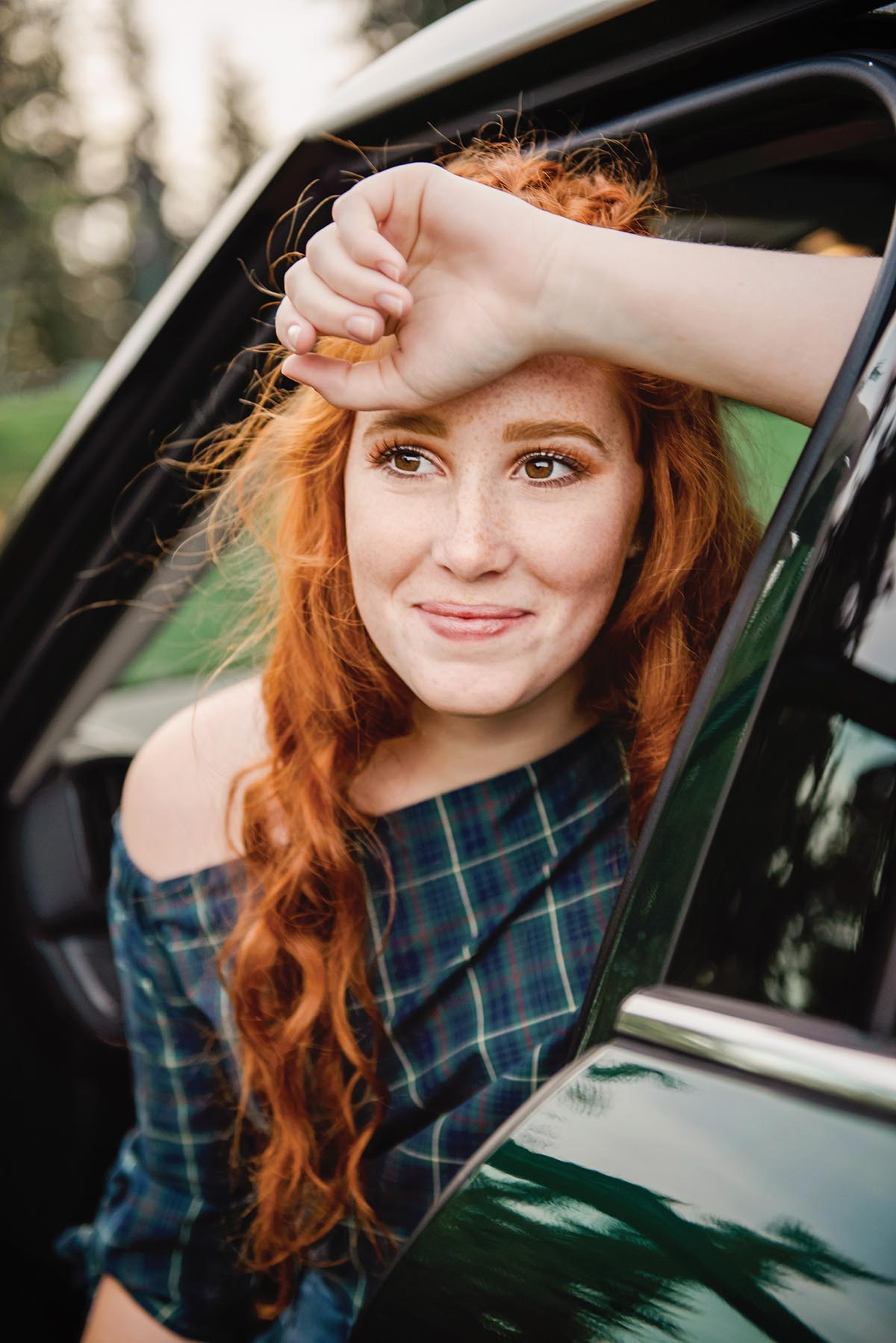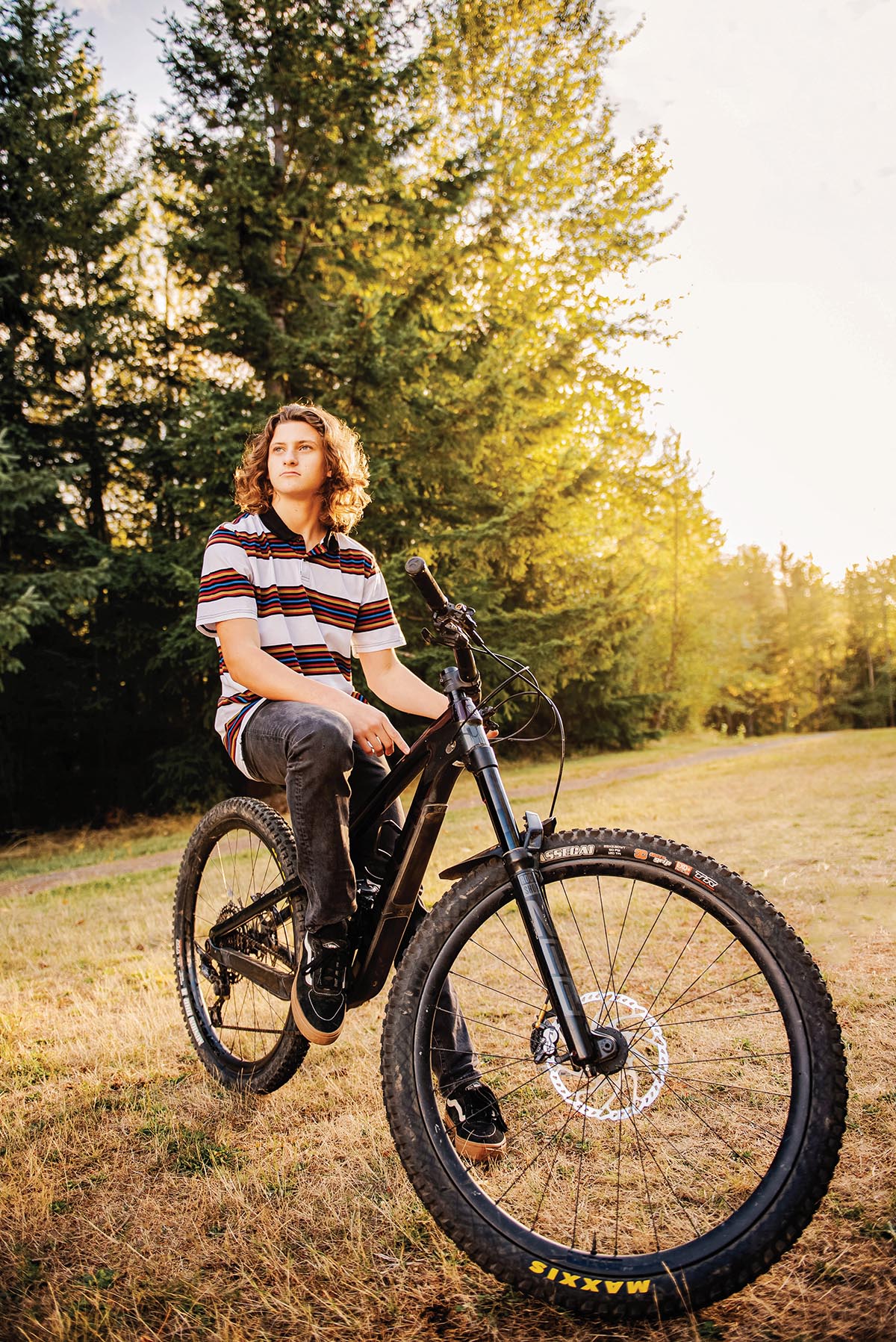
Senior portrait photographer Mary Vance has been working with teenagers since she was a teenager, not just as a photographer but through youth advocacy, mentoring, and leading support groups. While working with teens, she’s increasingly seen trends in senior photography that highlighted young people who fit into a narrow mold—one that left a lot of kids feeling like outsiders.
In reaction to that, she developed her own take on lifestyle senior portraiture, adapted to the lives of real teens. Her approach focuses on what she considers the majority of seniors to be—emerging adults who don’t fit in a mold, individuals with normal insecurities and understandable anxiety about their place in the world. She makes them feel included and helps them be seen in her work. Her goal is to photograph real kids in their real clothes in a style that brings out the best of their real personalities.

“I don’t care if you are the star athlete, the smartest kid in the class, or if you’re getting a D in math,” she says. “I don’t care if you identify outside of the pink-is-for-girls-blue-is-for-boys gender stereotypes. I want to be inclusive of all genders, all representations.”
The approach appeals to a lot of teens in and outside the mainstream, including many who may not have even wanted senior portraits because they couldn’t envision themselves in the typical images they’re used to seeing on social media. As a result of her philosophy and images, Vance has seen her bookings increase substantially while she builds an increasingly inclusive client base. She shares tips on how to relate to high school seniors.
SETTING THE TONE
Setting the right tone for a senior portrait session often comes down to good communication. Vance says some photographers act as if they’re afraid of teenagers. Maybe they think they don’t have anything in common with these young people. Or that teens are hard to relate to. “These are mental blocks,” says Vance. “But with a few conversation guidelines, you can set the right tone and have good interactions.”
Slow down and listen. Listen to understand; don’t just wait until it’s your turn to speak. Teens will notice when you’re not actively listening, and they’ll shut down. When they see you’re genuinely listening to them, they feel heard and appreciated. This is when they tend to open up.
Ask good questions. A conversation shouldn’t feel like an interrogation. To crack through the surface and get to know your subject, start with warmup questions then gradually go deeper into topics that interest them. Vance gives the example of talking with a football player. You could start by commenting, “I see you play football.” Then ask, “What position do you play?” Then go a little deeper: “How does it feel when you step out on the field on a Friday night?” Then: “You’ve been on this team for years. What are you going to miss the most when you leave this brotherhood?”

This progression could work for any activity to show you’re interested in something that’s important to the senior. You’re working your way, step by step, toward asking more meaningful questions that open up the senior’s personality.
Ask them to teach you. It’s OK if you don’t know a lot about what interests the teen. They don’t expect you to know everything they’re into, and you shouldn’t try to pretend you do because you’ll just come off as insincere. Instead, ask them to teach you. Empower them with the feeling that they’re the expert on the topic and can share their knowledge as well as their sense of accomplishment.

POSING FOR NATURAL MOVEMENT
Different bodies are capable of different things, notes Vance. Rather than trying to shape subjects into poses that aren’t natural for them, work with each person to find what’s comfortable. “Natural movement is key,” she explains. “From the minute you see the teen get out of the car, observe how they are moving. What are they doing with their hands? What is their body language telling you? Let those movements guide how you pose them.”
If the senior is looking anxious and acting embarrassed or insecure, then putting them into a complicated pose or making them hold a position while you fiddle with camera settings will exacerbate their discomfort. Instead, keep it simple and guide them through movements that are natural to them.

Vance breaks down most of her sessions into three categories of posing: walking, standing, and sitting. Most bodies are capable of doing those three basic movements, so she keeps the poses within subjects’ comfort zones and avoids things like balancing on one leg, skipping, climbing, or other things that may put teens off balance.
Perhaps most important is steady reassurance. “I’m constantly telling them, ‘You cannot do it wrong,’” says Vance. “‘And I’m going to coach you the entire time.’” She also sets the expectation that she’s going to do everything at least twice. She tells the seniors it’s because she needs to capture each pose on a separate camera body, which is why she carries two cameras at all times. In reality, she’s providing an opportunity for a second take without making the senior believe they messed up the first try. “I want to remove the expectation that they have to perform or any feeling that they did something wrong,” she says.

A BREATH OF FRESH AIR
At every step of the process, Vance urges photographers to consider how challenging the teenage years can be. “People are more connected now than ever before while simultaneously feeling more isolated,” she says. “The world that these kids are inheriting has some problems. There’s so much worry. And there’s so much pressure coming at them from all angles. I want to encourage photographers to give each person they photograph a breath of fresh air. Help them feel like they really matter, that they are seen and appreciated. That’s the bigger humanity of the work, and it can make such a difference.”
Jeff Kent is editor-at-large.

 View Gallery
View Gallery


